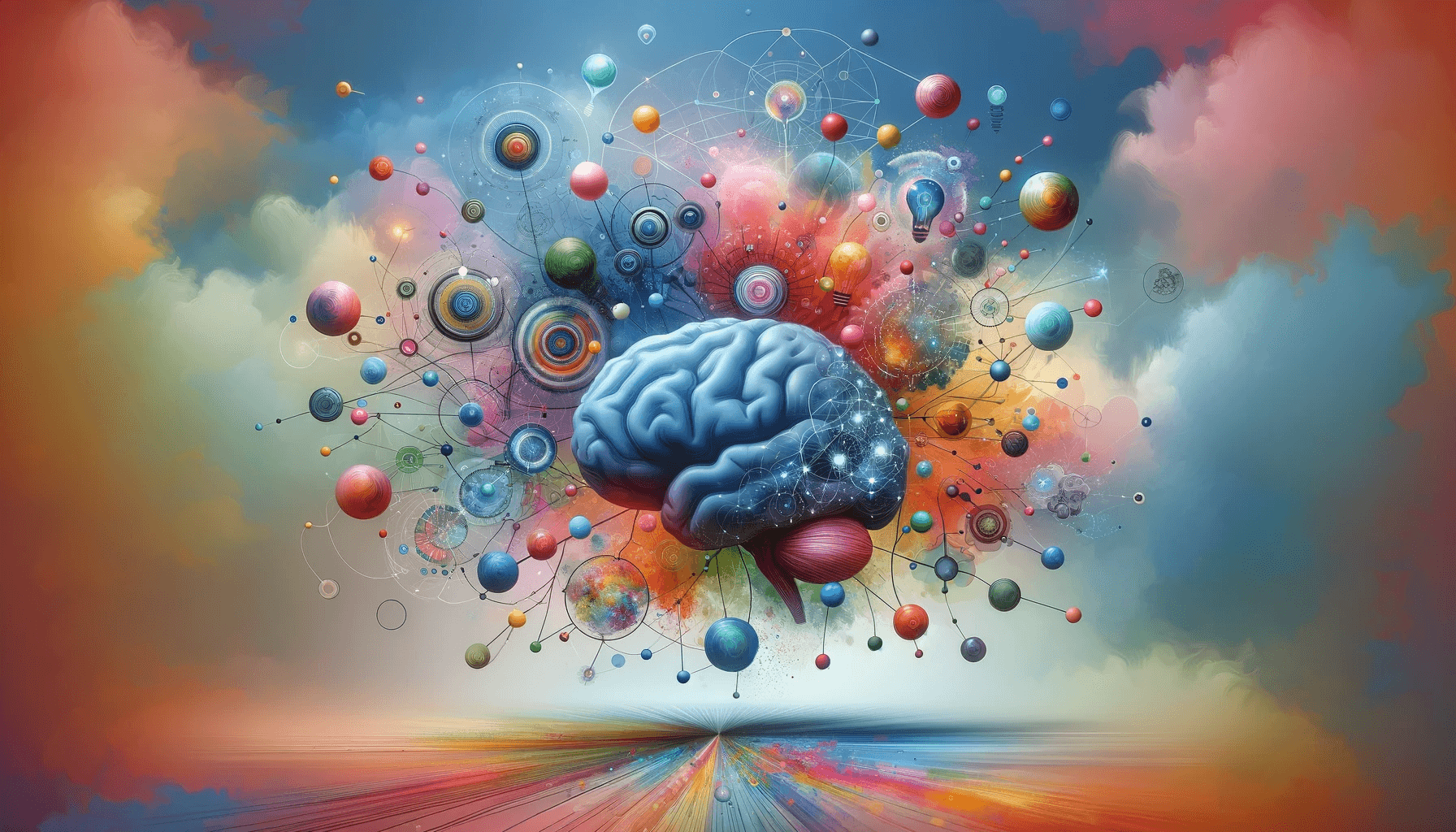Sponsor Einstein Success Code
Table of Contents
Introduction to the Halo Effect
Human beings are complex creatures. Our perceptions, beliefs, and judgments are all shaped by many factors, some of which we may not even be aware of. One such factor is the Halo Effect, a cognitive bias that influences how we perceive and evaluate others. This article will delve into the psychology behind the Halo Effect, explore its impact on decision-making, and discuss strategies to overcome its influence.
Understanding the Psychology Behind the Halo Effect
The Halo Effect refers to our tendency to judge an individual positively in one area based on our positive perception of them in another unrelated area. In simpler terms, if we perceive someone to be attractive, intelligent, or successful, we are more likely to assume they possess other positive qualities. This cognitive bias was first identified by psychologist Edward Thorndike in 1920 and has since been studied extensively.
The Halo Effect is rooted in our need for cognitive efficiency. Our brains are wired to simplify complex information and categorize people based on limited observations. This mental shortcut allows us to make quick judgments but can also lead to inaccurate assessments. By understanding this underlying psychology, we can recognize when the Halo Effect clouds our perceptions and take steps to mitigate its influence.
Examples of the Halo Effect in Everyday Life
The Halo Effect manifests in various aspects of our daily lives. Here are some common examples of the Halo Effect in everyday life:
- Job Interviews: If an interviewer finds a candidate attractive or likable in the first few minutes, they may be inclined to view the candidate’s responses and qualifications more favorably throughout the interview.
- First Impressions in Social Settings: When meeting someone new, a positive first impression (such as finding them attractive or charming) can lead to assuming they have other positive qualities, like intelligence or kindness.
- Product Endorsements by Celebrities: When a beloved celebrity endorses a product, people may perceive the product as higher quality due to their positive feelings towards the celebrity, not necessarily the product’s merits.
- Education and Grading: A teacher’s perception of a student’s behavior or previous performance can influence the grading of that student’s work. A well-behaved student may benefit from the doubt in subjective grading situations.
- Work Performance Evaluations: An employee who has previously performed well or is well-liked by their supervisor might receive a more positive performance review, even if their recent performance has not been up to par.
- Political Perception: A politician seen as charismatic or trustworthy in one aspect may be viewed positively in their political stances and actions, even without substantial evidence for such competence.
- Advertising and Brand Loyalty: If consumers have a positive experience with one product from a brand, they are more likely to have a favorable view of other products from the same brand.
- Social Media Influencers: Followers might assume that because they find a social media influencer attractive or entertaining, the influencer is also intelligent, kind, or morally upright.
- Celebrity Chefs and Restaurants: A restaurant associated with a famous chef might be presumed to have high-quality food, even if individual dishes still need to be critically evaluated.
- Health and Fitness Advice: An attractive physique might be seen as more knowledgeable about health and fitness advice, regardless of their expertise or qualifications.
In each of these examples, the Halo Effect demonstrates how our overall impression of a person or brand can disproportionately influence our judgments about their specific traits or attributes.
The Impact of the Halo Effect on Decision-Making
The Halo Effect can have significant implications for decision-making, both on an individual and societal level. When this bias influences us, our judgments become skewed, and we may overlook valuable information contradicting our preconceived notions. This can be particularly detrimental in professional settings, where the Halo Effect may influence hiring decisions, performance evaluations, and promotions.
On a larger scale, the Halo Effect can perpetuate stereotypes and inequalities. If certain groups or individuals are consistently associated with positive attributes while others are stigmatized, it can lead to systemic biases and discrimination. For example, if a particular ethnic group is disproportionately associated with criminality, individuals from that group may face prejudice and limited opportunities, regardless of their character or abilities.
Cognitive Biases Associated with the Halo Effect
The Halo Effect is a type of cognitive bias that can be associated with or influence other cognitive biases. Here are some cognitive biases that are often related to or affected by the Halo Effect:
- Confirmation Bias: This is the tendency to search for, interpret, favor, and recall information in a way that confirms one’s preexisting beliefs or hypotheses. In the context of the Halo Effect, once we form a positive overall impression of someone, we tend to seek out and remember information that confirms that good impression and ignore information that contradicts it.
- Attractiveness Bias: This is the tendency to perceive attractive people as more talented, kind, honest, and intelligent. It’s a specific form of the Halo Effect where physical attractiveness creates a “halo” of positive traits.
- First Impression Bias: This bias highlights the tendency to form lasting opinions about an individual based on first impressions. The Halo Effect often plays a significant role in first impressions, where a single positive trait (like attractiveness or charm) can color our entire perception of a person.
- Anchoring Bias: This is the common human tendency to rely too heavily on the first piece of information offered (the “anchor”) when making decisions. In the Halo Effect, the initial positive impression is an anchor that influences subsequent judgments and evaluations.
- Stereotyping: This involves creating an oversimplified image of a particular group of people, usually by assuming that all group members are alike. The Halo Effect can lead to positive or negative stereotypes, depending on the initial impression of a group member.
- Affect Heuristic: This mental shortcut allows people to make decisions and solve problems quickly and efficiently, where current emotions influence the decisions. With the Halo Effect, if we feel positively about a person, we’re more likely to make positive judgments about them.
- In-group Favoritism: This bias refers to the tendency for people to give preferential treatment to others when they perceive them as members of their group. The Halo Effect can enhance this bias if the in-group member has favorable traits.
- Optimism Bias: This bias causes a person to believe that they are at a lesser risk of experiencing a negative event than others. About the Halo Effect, someone with a positive impression of a situation or person might underestimate the risks or negative aspects associated with them.
- Implicit Personality Theory: This is the assumption that certain human personality traits correlate. For example, kind people are also perceived as trustworthy due to the Halo Effect.
- Self-Serving Bias: This is the tendency to attribute positive events to one’s character but attribute negative events to external factors. The Halo Effect can reinforce this bias when individuals attribute positive traits to themselves and view themselves more favorably.
These biases often interact and can compound the effects of the Halo Effect, leading to a skewed perception of individuals, situations, or objects based on limited or superficial information.
Strategies to Overcome the Halo Effect
Overcoming the Halo Effect involves being aware of it and actively employing strategies to mitigate its influence. Here are several strategies that can help:
- Increase Awareness: The first step in overcoming any cognitive bias, including the Halo Effect, is to be aware of its existence and understand how it influences your judgments and decisions. Awareness can come through education, self-reflection, and feedback from others.
- Seek Objective Information: Make a conscious effort to gather factual, objective data independent of personal impressions. This could involve looking at performance metrics professionally or seeking out unbiased reviews and opinions when evaluating a product or service.
- Challenge First Impressions: First impressions can be powerful, but they can also be misleading. Take the time to reassess your initial judgments and be open to changing your opinion as you receive more information.
- Use Structured Decision-Making Processes: Implementing structured evaluation and decision-making methods can help minimize the impact of personal biases. For example, using a standardized set of questions and a scoring system for all candidates can reduce subjective biases in the hiring process.
- Practice Critical Thinking: Engage in critical thinking by questioning assumptions, considering alternative viewpoints, and weighing evidence objectively. This helps in making decisions that are based on logic and evidence rather than on biased perceptions.
- Diversify Perspectives: Seek input from a diverse group of people when making decisions. Different perspectives can provide a more balanced view and highlight aspects you may have overlooked due to the Halo Effect.
- Delay Judgements: Avoid making snap decisions, especially about people. Give yourself time to gather more information and reflect on your impressions.
- Focus on Specifics: Instead of forming a general impression, concentrate on specific qualities or traits. Evaluate each trait independently to avoid generalizing based on a single characteristic.
- Mindfulness and Emotional Regulation: Being mindful of your emotional state and learning to regulate emotions can help reduce the impact of biases. Emotional reactions often fuel cognitive biases like the Halo Effect.
- Regularly Review and Reflect: Make it a practice to review decisions and consider whether biases influence them regularly. Reflecting on past decisions and learning from them can improve future decision-making.
- Seek Constructive Criticism: Encourage others to provide feedback on your decisions and perceptions. Constructive criticism can help you identify when the Halo Effect might influence your judgment.
- Educate and Train Others: In a group or organizational setting, training others about the Halo Effect and other cognitive biases can create a culture of mindfulness and critical thinking, which can collectively reduce the impact of these biases.
Overcoming biases like the Halo Effect is an ongoing process. Recognizing and adjusting for these subconscious influences requires continuous effort and self-awareness.
Case Studies on the Halo Effect in Marketing and Advertising
The Halo Effect plays a significant role in marketing and advertising, influencing how consumers perceive brands and products. Here are a few case studies that illustrate the impact of the Halo Effect in these fields:
Apple’s Product Ecosystem
- Background: Apple Inc. is renowned for its high-quality products like the iPhone, iPad, and MacBook.
- Halo Effect: The success and positive reception of the iPhone created a Halo Effect for other Apple products. Consumers often perceive all Apple products as high-quality and innovative, primarily due to one flagship product’s positive experiences and reputation.
- Result: This perception has successfully helped Apple launch new products and maintain premium pricing.
Celebrity Endorsements in Athletic Wear
- For example, Nike uses celebrity endorsements, such as Michael Jordan and later LeBron James.
- Halo Effect: The success and charisma of these athletes created a positive association with the Nike brand. Consumers associate the excellence and popularity of these athletes with the quality of Nike products.
- Result: This increased sales and brand loyalty, showing how the Halo Effect can transfer from a person to a product.
Eco-Friendly Products and Brand Perception
- Scenario: A company known for its commitment to sustainability and eco-friendly products.
- Halo Effect: The company’s reputation for being environmentally responsible can lead to a positive overall brand image. Consumers may assume all the company’s products are high-quality and ethically produced.
- Result: This can increase customer loyalty and willingness to pay premium prices.
Automotive Industry: Tesla’s Innovation Reputation
- Context: Tesla is known for its innovation in electric vehicles.
- Halo Effect: The innovative image of Tesla’s electric cars casts a positive light on all aspects of the company, including its solar panels and battery products.
- Result: This has helped Tesla market its non-automotive products to a receptive audience.
Fast Food Chains and Health-Conscious Items
- Example: A fast-food chain known primarily for unhealthy options introduces a line of salads and healthier meals.
- Halo Effect: Introducing these healthier options can create a health-conscious image for the entire brand, even if most of the menu remains unchanged.
- Result: This can attract a new customer base and change public perception of the brand.
Cosmetics Brands and Celebrity Lines
- Scenario: A well-known cosmetics brand collaborates with a popular celebrity to launch a new makeup line.
- Halo Effect: The celebrity’s popularity and image can enhance the perceived quality and desirability of the cosmetic products.
- Result: Often leads to a surge in sales and brand visibility.
Retail Stores and Private Labels
- Example: Large retailers like Walmart or Target are introducing private-label products.
- Halo Effect: The strong brand reputation of the store transfers to private label products, leading consumers to perceive them as reliable and good value for money.
- Result: Increased sales of private label products and enhanced overall store loyalty.
In each case, the Halo Effect influences consumer perception and decision-making, often leading to increased sales, brand loyalty, and successful introduction of new products. These examples highlight the power of a strong brand image and the importance of managing consumer perceptions in marketing and advertising strategies.
The Halo Effect on Personal Relationships
The Halo Effect extends beyond professional and marketing contexts and can also impact our personal relationships. When we form an initial positive impression of someone, we are more likely to overlook their flaws or negative behaviors. This can lead to unrealistic expectations and disappointments when the Halo Effect eventually fades. Similarly, relationships that begin with a negative impression may struggle to overcome the initial bias, as the negative Halo Effect colors subsequent interactions.
It is crucial to remain mindful of the Halo Effect to foster healthier and more genuine personal relationships. By acknowledging our predisposition to judge others based on limited information, we can approach relationships with a more open and discerning mindset. Taking the time to truly get to know someone and valuing their individual qualities rather than relying on generalizations can help build stronger connections.
The Dark Side of the Halo Effect
While the Halo Effect can have positive implications, it also has a dark side. This bias can perpetuate stereotypes and prejudices, leading to discrimination and marginalization. When we assume someone possesses positive qualities based on limited information, we risk overlooking their flaws and perpetuating unrealistic expectations. This can create a harmful cycle of idealization and disappointment in personal relationships and societal interactions.
Conclusion: Embracing Critical Thinking in the Face of the Halo Effect
The Halo Effect is a powerful cognitive bias that influences how we perceive others and make decisions. By understanding the psychology behind this bias, recognizing its impact on decision-making, and employing strategies to overcome its influence, we can strive to make more accurate and objective judgments. Embracing critical thinking and challenging our initial impressions can help us navigate the complexities of human perception and foster healthier personal and professional relationships.






